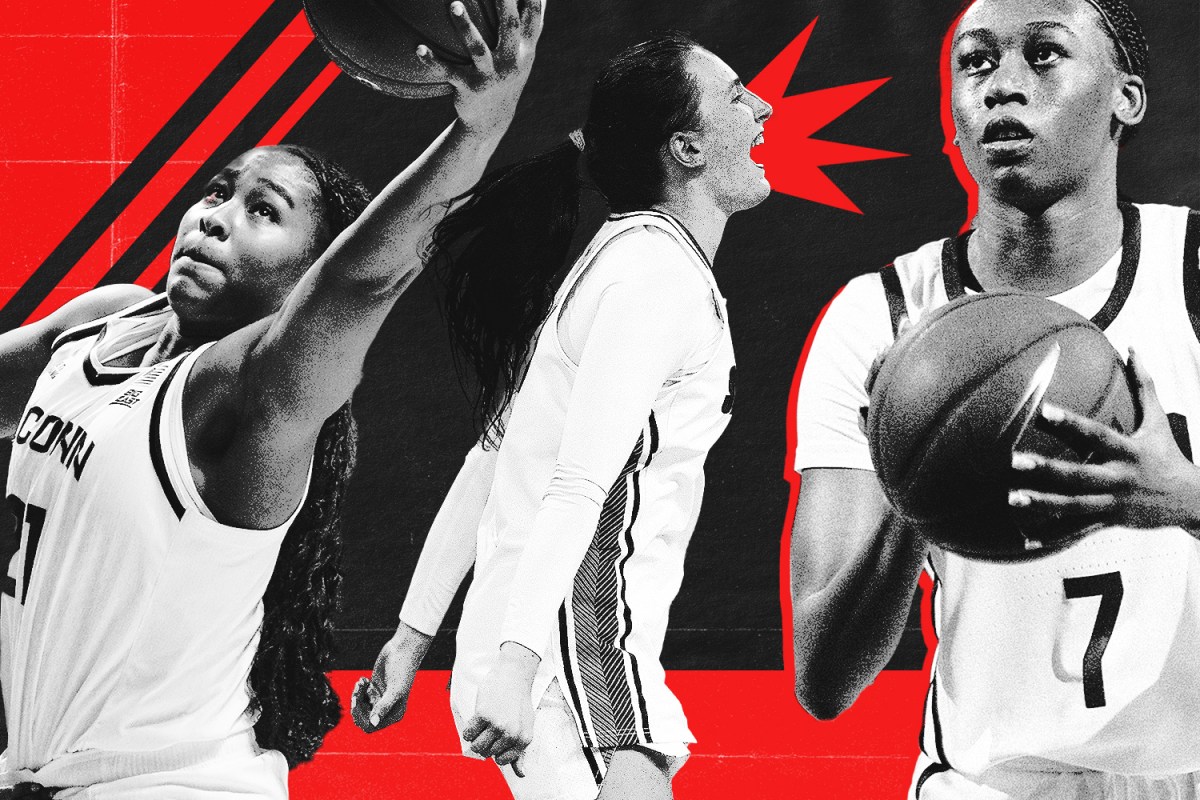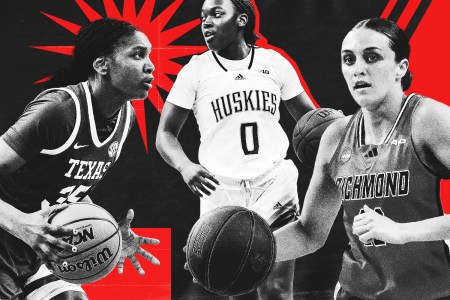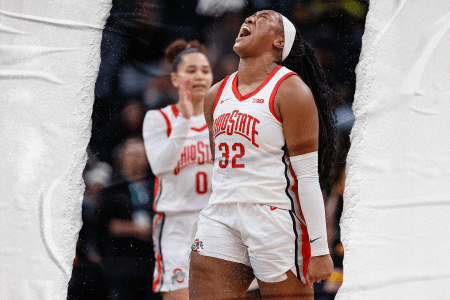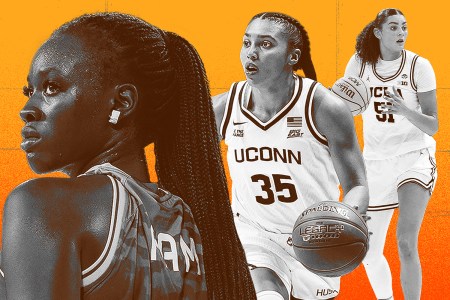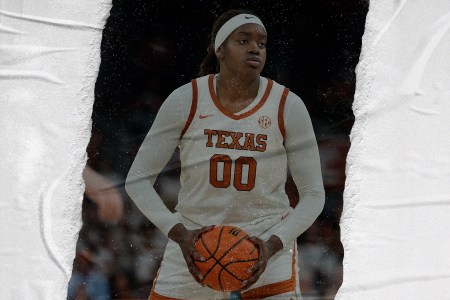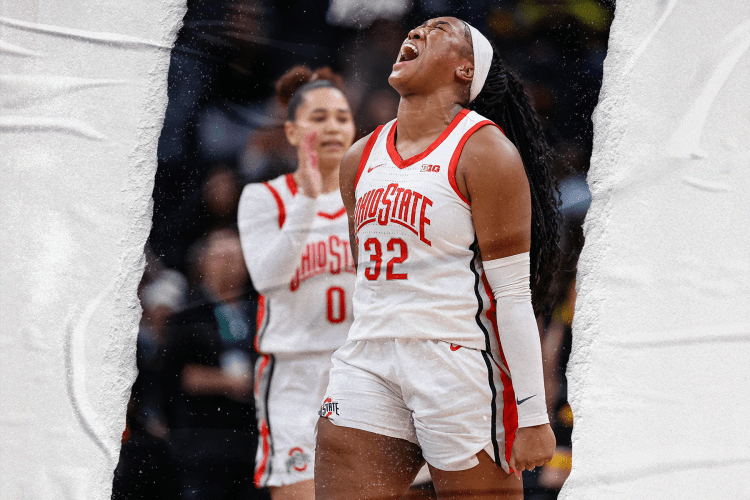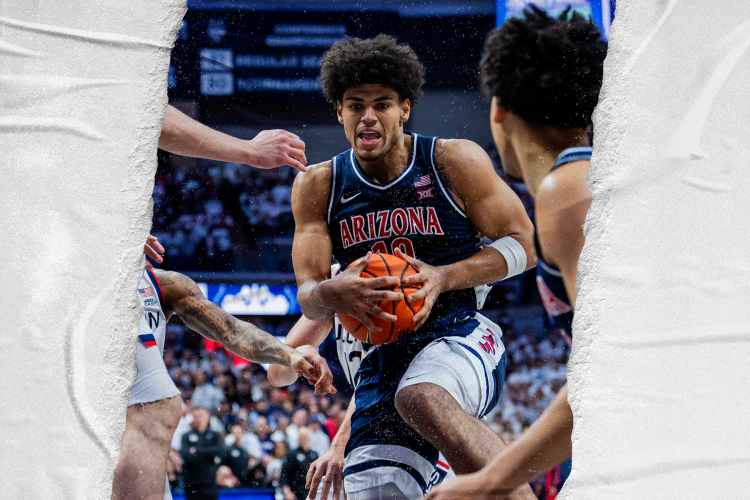Kevin Clancy, who joined HHQ in 2025, has worked in women’s basketball since 2012, contributing at the NCAA DI, DII, junior college, and high school levels as a coach, trainer, consultant, evaluator and writer. Kevin can be reached at Kevin Clancy (@TheOneKevClancy) / X.
The 2025-26 college basketball season is fast approaching for both the men and women. Over the last two weeks, Hoops HQ rolled out our top 100 men’s players. Today, we bring part two of our ranking of the top 25 women.
The score you see assigned to each player is the result of a unique mathematical analysis from the great Bart Torvik, which gives added weight to percentages over traditional numeric stats like points, rebounds, assists, etc. For instance, if a player is on the floor for 10 missed shots by the opposing team and corralled two of those defensive rebounds, her Defensive Rebound Rate would be 2/10, or 20 percent. These percentages go into calculating a player’s overall score. The highest on record was Caitlin Clark in 2023-24 with an 11.1, for reference. The benefit of this calculus is that it reveals which players make the most of their minutes on the floor.
To be considered the best, you have to be at your best against the best, which is why our HHQ Rating only accounts for games against Top 50 opponents. Each player had to play a minimum of five games against top-50 competition last season to be considered.
10. Kiki Rice, 5-foot-11 senior guard, UCLA (HHQ Rating: 7.4)
Rice has an argument for being the best scoring point guard in the country. She posted a true shooting rate of 60.6 percent against top-50 opponents in 2024-25 while also notching a 31.9-percent assist rate (2.1 assist-turnover ratio). Rice was able to score from everywhere, shooting 19 of 54 (35.2 percent) from three, 85 of 163 (52.1 percent) from two and 94 of 109 (86.2 percent) from the free-throw line. Add in her 2.6-percent steal rate, and you’re looking at one of the premier point guards in women’s college basketball.
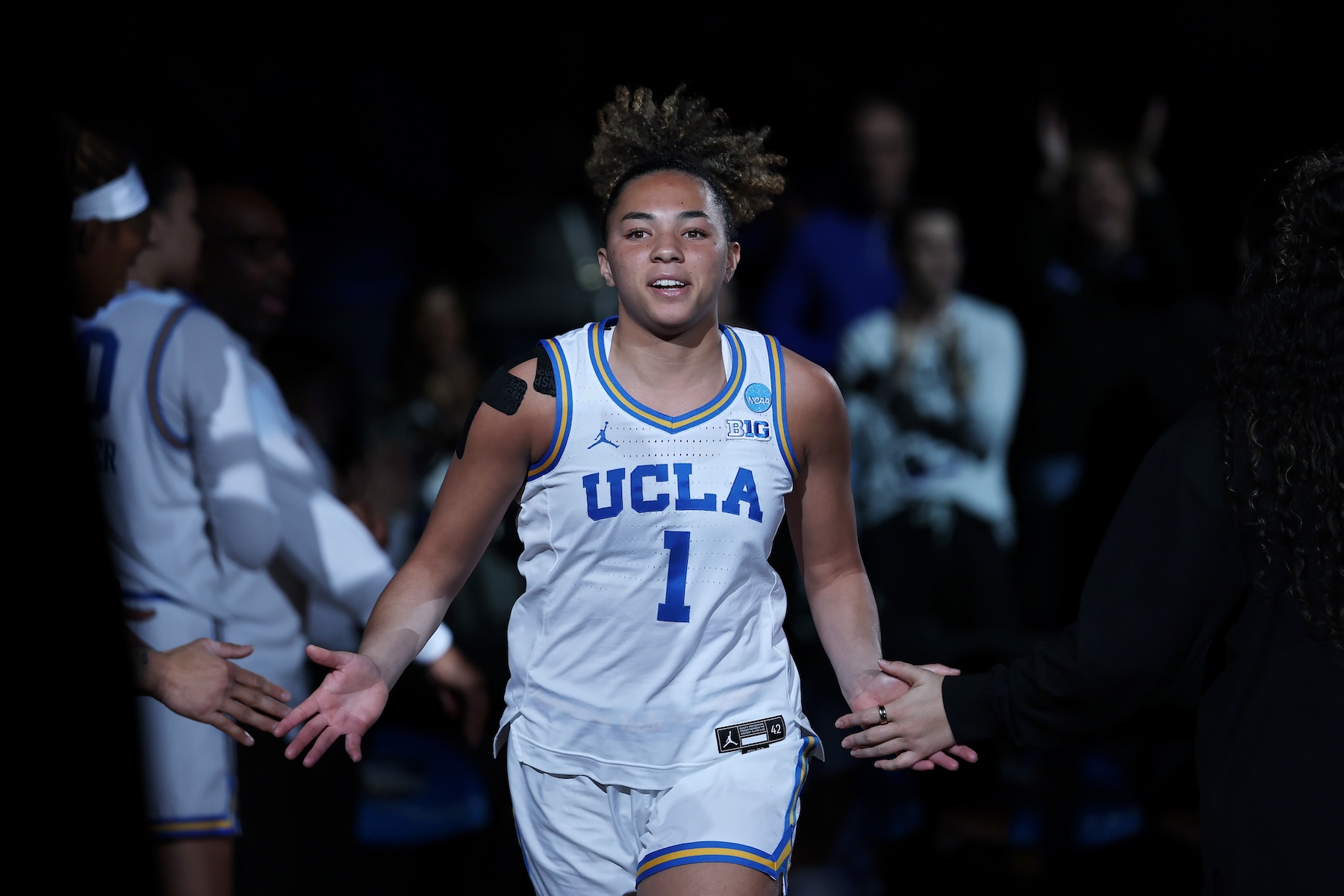
9. Ta’Niya Latson, 5-foot-8 senior guard, South Carolina (HHQ Rating: 7.9)
Latson comes to Columbia from Florida State, where she ran the show (38.0-percent usage rate) and played intense pressure defense. In 13 games against top-50 opponents, Latson posted a 24.4-percent assist rate, a 15.0-percent turnover rate and a 3.5-percent steal rate. She also helped the cause on the defensive glass (defensive-rebound rate of 10.4 percent). Now on a loaded team that includes 6-foot-6 Madina Okot protecting the rim, Latson will have the opportunity to be even more aggressive defensively.
8. Audi Crooks, 6-foot-3 junior center, Iowa State (HHQ Rating: 7.9)
Crooks is an absolute force inside, both scoring and rebounding. As a sophomore, the Cyclone had an impressive eFG% of 60.9 percent while posting an 8.1-percent o-reb rate and a 17.7-percent d-reb rate. She stepped up against top-50 opponents, recording a usage rate of 32.8 percent, and the Cyclones will continue to lean on their powerful post as they seek their first Big 12 regular-season championship since 2000.
Ranking the Top 25 Players in Women’s College Basketball: Nos. 25-11
Part 1: Ahead of the 2025-2026 season, Hoops HQ uses data to definitively count down the 25 top women’s players
7. S’Mya Nichols, 6-foot junior guard, Kansas (HHQ Rating: 8.0)
Nichols was terrific with the ball in her hands, whether it be scoring or distributing. As a three-level scorer, she posted a 50.0-percent eFG% and a true shooting percentage of 60.4. Her assist rate was an outstanding 37.2 percent, and her assist-turnover ratio came out to 1.3. Nichols even pulled down 9.0 percent of all available defensive rebounds. She’ll be an indispensable part of the Jayhawks’ success in 2025-26.
6. Lauren Betts, 6-foot-7 senior center, UCLA (HHQ Rating: 8.4)
Since arriving in college in 2022, Betts’ production has increased greatly year after year. The Bruins center truly showed no weaknesses in her junior season, particularly in her 22 games against top-50 competition, which saw her post an eFG% of 64.2 percent, an o-reb rate of 13.6 percent, a d-reb rate of 17.2 percent and a block rate of 9.0 percent. What makes Betts most dangerous, though, may be her passing ability, as shown by her 22.1-percent assist rate. The potential No. 1 pick in the 2026 WNBA Draft will look to continue building on her success, hoping to cap an excellent career with UCLA’s first national championship.

5. Maggie Doogan, 6-foot-2 senior forward, Richmond (HHQ Rating: 8.6)
Doogan exploded in 2024-25 and saved her best for the elite competition; in her seven games against top-50 teams, Doogan put up a 61.9-percent eFG%, including shooting 16 of 35 (45.7 percent) from three and 36 of 52 (58.1 percent) from two. Doogan also posted a 21.1-percent defensive-rebounding rate, a 30.0-percent assist rate and 1.3 assist-turnover ratio. If Doogan can replicate or even improve upon these numbers with the added attention that will be put on her, there will be no doubt she is deserving of a shot in the WNBA.
4. Riley Weiss, 5-foot-10 junior guard, Columbia (HHQ Rating: 8.7)
Weiss was simply sensational for Columbia in her eight games against top-50 opponents. The sharpshooter was 32 of 75 from three (42.7 percent) and 29 of 30 from the free-throw line (96.7 percent), resulting in a 61.1-percent true shooting percentage. Weiss also posted a 10.1-percent defensive-rebounding rate as Columbia reached the NCAA Tournament as an at-large qualifier. If she can improve her scoring at the rim (8 of 18, 44.4 percent), Weiss would certainly become a weapon that pro teams would covet in the 2027 WNBA Draft.
3. Sarah Strong, 6-foot-2 sophomore forward, UConn (HHQ Rating: 9.2)
Strong had a case for being the nation’s best player in 2024-25. With an effective field-goal rate of 61.8 percent, a defensive-rebounding rate of 28.4 percent, a block rate of 5.5 percent and a steal rate of 3.7 percent, she posted unicorn-type numbers in her 16 games against top-50 competition. With 2025 WNBA No. 1 overall pick Paige Bueckers gone, Strong will be asked to shoulder even more of the weight for head coach Geno Auriemma. By all metrics, she appears to be up to the task for the defending national champions.

2. Mikayla Blakes, 5-foot-8 sophomore guard, Vanderbilt (HHQ Rating: 9.2)
Blakes was a walking bucket at Vanderbilt last season, and she did so efficiently at a high volume. In 16 games against the top 50, the freshman scored at all three levels with a true-shooting percentage of 58.9 while maintaining a usage rate of 32.0 percent. Blakes was also sharp defensively, posting a 2.9-percent steal rate. The next evolution for Blakes will be how to distribute to her teammates while maintaining the ability to score; if she can do that, we may be looking at the next coming of Paige Bueckers.
1. Hannah Hidalgo, 5-foot-6 junior guard, Notre Dame (HHQ Rating: 9.7)
Hidalgo came off an impressive freshman year and improved upon it in 2024-25, saving her best for the elite competition. In 17 games against the top 50, Hidalgo hit 43.4 percent of her three-pointers (36 of 83) and posted a 55.0-percent true shooting percentage. She also got to the free-throw line, making 95 of 110 (86.4 percent), and her 21.1-percent assist rate demonstrated her ability to get teammates the ball in positions to score. What may be most impressive is her effort on the defensive end, where she registered a steal rate of 4.1 percent while pulling down 9.1 percent of all available defensive rebounds. Hidalgo may be in position to post a historic season in South Bend.

